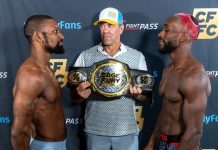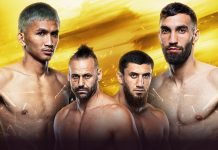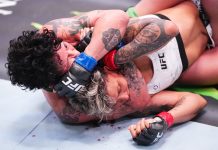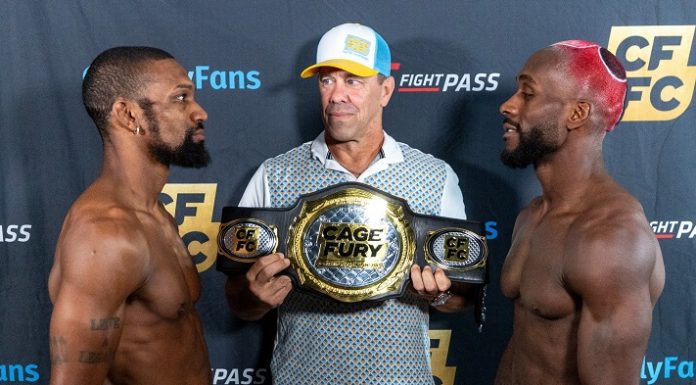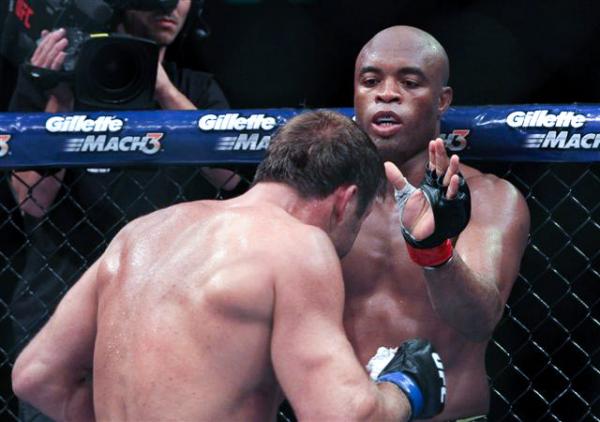
UFC legend Anderson Silva may say he’ll be back soon, but it seems like ‘The Spider’ is caught in his own web.
I rarely start any piece, opinion or otherwise, with a disclaimer, but here goes: I’m an Anderson Silva fan. ‘The Spider’ has remained one of the most entertaining fighters in the UFC for years, and even as his skills have declined, I haven’t missed a moment of action with him in it. I was blown away when he fought Daniel Cormier on almost zero notice at UFC 200. Forget the action in the cage, simply taking that fight was a display of ferocious competitiveness most humans lack. Months later, I was elated when he finally picked up another win at UFC 208, no matter how iffy a decision it was.
But having said all that, things are not looking good for Silva these days, and the fact that ‘The Spider’ has been caught in his own web becomes increasingly hard to overlook.
A week ago, we learned which substances were found in Anderson Silva’s system following a failed drug test prior to UFC Shanghai late last year. While the U.S. Anti-Doping Agency (USADA) does not release what an athlete has tested positive for until after the legal process plays out, Brazil’s Combate reported that Silva was flagged for both a diuretic and synthetic testosterone, specifically Methyltestosterone. And suddenly, despite Silva saying recently that he was certain he’d be back soon, things were looking very bleak for one of the UFC’s last remaining legends.
GOAT conversation? If Silva, the former middleweight champ and frequent pick for greatest of all time, started running into people with his car, he’d be competing with Jon Jones in the Biggest Fall From Grace category.
The Spider Is Not Alone
Speculation can be dangerous, but seeing a substance like Methyltestosterone pop up alongside a diuretic (commonly used as masking agents) is a big red flag. Methyltestosterone has both androgenic and anabolic effects; its primary use is as a medication to treat low testosterone in men, and delayed puberty in boys. Outside of prescribed medical use, the substance is banned pretty much everywhere.
Anderson Silva is not the first UFC fighter to test positive for it. Methyltestosterone metabolites were found in a urine sample collected from Felipe Olivieri in January 2016. Olivieri lost his UFC debut to Tony Martin at UFC on FOX 18 just weeks after the positive test (results were not returned in time for the bout to be called off). Following arbitration, Olivieri was handed down a two-year ban.
Former UFC heavyweight Frank Mir, meanwhile, tested positive for dehydrochloromethyltestosterone, sold under the common name Turinabol. That’s a derivative of metandienone, which is itself an analogue of Methyltestosterone (in other words, it’s a similar compound). Mir’s test came in 2016, and he was also handed a two-year vacation.
The bottom line here is that several fighters have tested positive for variations of the same thing, and that’s not surprising. While there are cases of legitimately tainted supplements, the doping game is very much a cat and mouse effort. USADA (and its WADA-accredited labs) improve detection for one substance, abusers switch to another.
Caught in His Web, Again
Now we come to ‘The Spider’ getting caught in his own web. If you look back to Anderson Silva’s first drug test failures, surrounding his fight with Nick Diaz at UFC 183 in 2015, you see the similarities. Back then, Silva failed an out-of-competition test carried out under the NSAC. He also failed his pre and post-fight drug tests. USADA was still months away from taking over the UFC’s anti-doping program, but the Nevada athletic commission used enhanced testing for the bout. Silva failed for a host of substances including drostanolone metabolites and methyl androstane. Oxazepam and temazepam, anti-anxiety meds, were also detected, and though not banned by the NSAC should have been declared by the fighter.
As in the current case, Silva denied any wrongdoing. “I think (Silva has) done excellent things, but this is the first time he’s really been subject to enhanced testing,” NSAC commissioner Anthony Marnell said at the time (via MMA Junkie). The frustration with Silva’s explanation of how the failed tests happened was palpable. “I feel there’s some intention here to use the product to come back from a devastating injury. There’s definitely knowledge of what’s going on here, and we’re just playing games. And that’s my frustration at all this soft testimony.”
That game playing included Silva claiming to have taken a sexual enhancer in a mysterious blue vial from a training partner in Thailand. In an excuse that strained credibility to its flimsiest, we were to believe a man considered the greatest mixed martial artist in history was comfortable ingesting random liquids in unmarked vials passed on from a training partner. Who maybe got it from a friend. Or his barber. Or some village shaman. You get the idea: it made no sense.
Where Does This Leave the Middleweight Great?
What many came to believe echoed the comments of Marnell at the time. We all let Silva slide due to the devastating injury he was coming back from, a snapped leg that is burned into the minds of every MMA fan who witnessed Weidman vs. Silva 2. We felt for our fallen hero because of how mortal he suddenly became in that moment. When he failed a bunch of drug tests his first fight back? We justified it by making it part of his comeback story. “He was on stuff, but it was just to get better.”
Silva’s failed drug tests are not so easily dismissed this time. He’s once again downplaying them, as he did just weeks ago. Incredibly, he even blamed his lawyers for not having the 2015 failures dismissed. But the fact remains that Silva is facing a suspension of four years (due to his previous case with the NSAC). Even as much as eight years factoring in aggravating factors. Silva’s team is reportedly arguing that the NSAC suspension should not be a factor, since the USADA program wasn’t in place then. It’s difficult to see them winning on that point, however.
What does all this mean? At 42 years old, the Spider is caught. He’ll be forced into retirement with a lengthy ban. It seems increasingly as if he didn’t learn his lesson the first time, that denials and flaky excuses won’t work. The best-case scenario seems like a two-year ticket to the sidelines. His days of competing are done; the Derek Brunson win at UFC 208 is likely to be his last. In hindsight, perhaps he should have walked away then. A positive ending, rather than this bleak, drawn out process with its seemingly inevitable conclusion.

